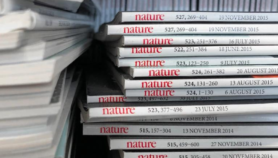By: T.V. Padma
Send to a friend
The details you provide on this page will not be used to send unsolicited email, and will not be sold to a 3rd party. See privacy policy.
[NEW DELHI] The Indian government has announced measures that should make it easier for foreign science publications to publish local editions
On 1 June, it announced that certain publications produced by Indian media groups could be funded entirely by foreign investment.
The rule applies to scientific, technical and speciality magazines and journals, but excludes news publications. As there is no official definition for ‘technical and speciality magazines’, the government will grant clearance on a case-by-case basis.
Previously, foreign investment in non-news publications was capped at 74 per cent, a limit set in June 2002 when the then National Democratic Alliance government opened Indian print media to foreign investment.
“The change from 74 to 100 per cent investment does not reflect a mere incremental change in numbers: rather it signifies that a new set of rules are in place which will help foreign science magazines set up Indian editions,” says Rajesh Kochhar, director of the National Institute of Science, Technology and Development Studies.
The change will not affect Indian research journals much because the government publishes them, points out an official from the National Institute of Science Communication and Information Research.
“I don’t think this will affect existing Indian science journals and magazines,” agrees P. Balaram, editor of Current Science, which is published by the Indian Academy of Sciences.
In addition to the research journals published by major government agencies, India’s Council of Scientific and Industrial Research also supports publication of the monthly science magazine Science Reporter and of popular science journals in Hindi and Urdu.
However, according to Kochhar, there are no journals published by the Indian private sector. “Also, most newspapers have discontinued regular science coverage.”
In the past, the popular science magazine Science Today, brought out by the Times of India group, as well as Indian editions of foreign science magazines such as the French La Recherche and US Scientific American, folded due to inadequate sales.
But Scientific American last week (6 June) re-launched its Indian edition, Scientific American India, in collaboration with the weekly news magazine India Today. It’s performance will provide clues about how Indian editions of other foreign science magazines could fare, says Kochhar.
Scientific American India costs 100 rupees (a little over US$2) per issue, compared to CSIR’s Science Reporter, which costs less than US$0.30. A year’s subscription to Current Science works out at a little under US$0.12 an issue.
Kochhar says it has been assumed that with India’s growing economy, more people will buy costlier science magazines.
“But how much of the new purchasing power of the Indian middle class, taken as an indicator of India’s economic growth, will actually translate into buying more science journals and magazines remains to be seen,” he says.
Meanwhile, most Indian science enthusiasts — scientists, students or policymakers — often have to share a sole institutional copy of a foreign science journal or magazine, or use websites offering free access to research papers from the West to catch up on research news.












